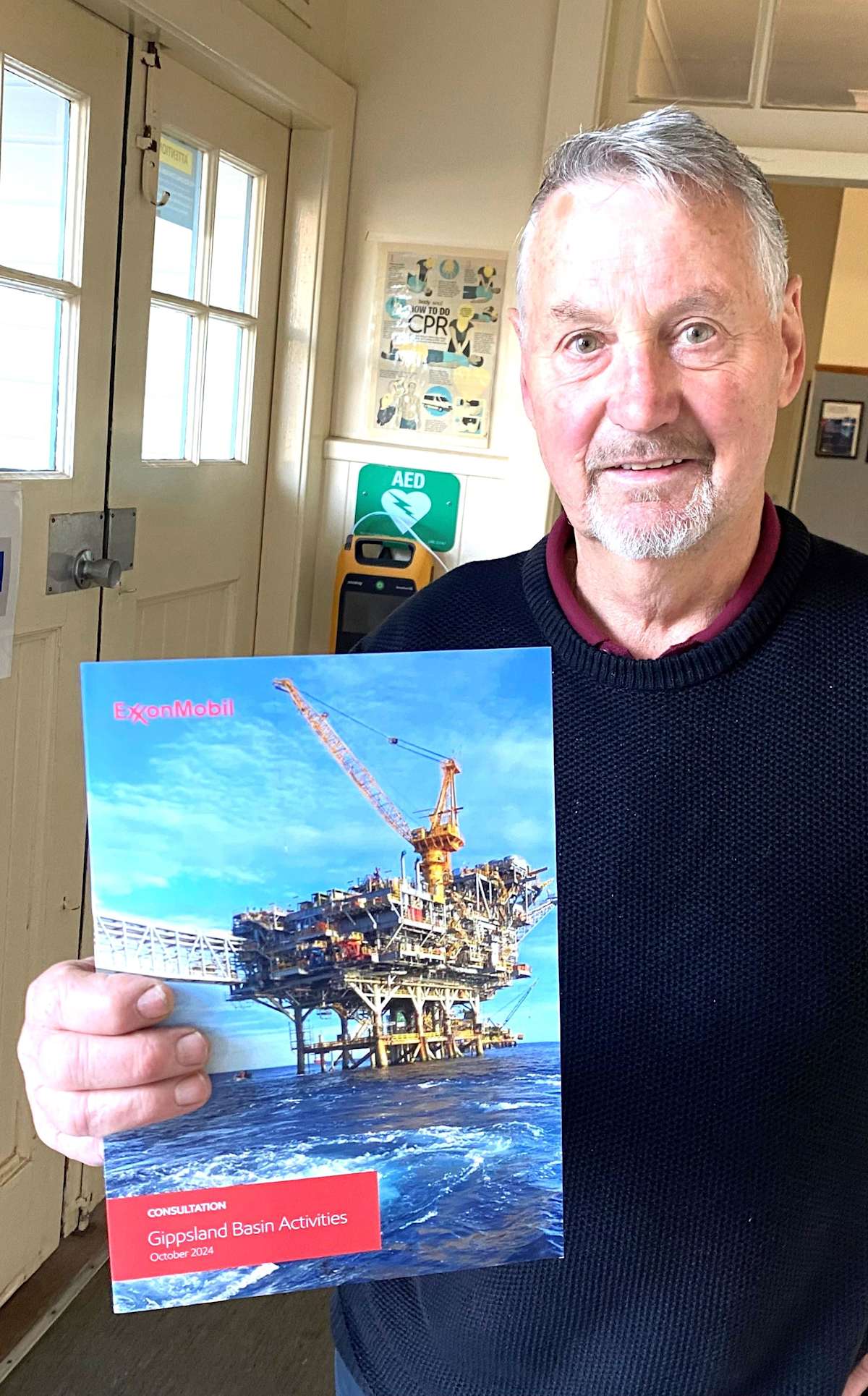How a monster ship and Barry Beach get the job done for ExxonMobil
THERE are some huge challenges, quite literally, associated with the decommissioning of the ExxonMobil-Woodside Energy oil and gas platforms and pipelines in the Gippsland basin after up to 55 years of production. Stage 1 of the project will include...

THERE are some huge challenges, quite literally, associated with the decommissioning of the ExxonMobil-Woodside Energy oil and gas platforms and pipelines in the Gippsland basin after up to 55 years of production.
Stage 1 of the project will include the removal of the topsides of up to 13 facilities, two mono-towers and the upper jacket sections of up to 10 steel-piled jackets, generating more than 60,000 tonnes of steel.
It’s a daunting task to be considering the removal of almost half of the oil and gas infrastructure in little more than a year and half, between the fourth quarter of 2026 and early 2028, ahead of breaking up the facilities at the Barry Beach Marine Terminal near Toora over the following two to three years.
Especially when you consider it took more than half a century to put it in place.
But one thing ESSO-BHP didn’t have when they discovered the Barracouta gas field in 1965 and set about developing what remains one of Australia’s largest oil reserves was the Pioneering Spirit.

The purpose-built vessel measuring 382 metres long and 124 metres wide is the world's largest ship by gross tonnage and the heaviest vehicle ever made.
And it’s headed this way.
But don’t expect it to tie up at any wharf in Australia. In fact, according to Simon Kemp, Decommissioning Asset Manager, ExxonMobil Australia, there’s only two places in the world where the Malta-flagged, Switzerland-based Allseas Group-owned catamaran crane vessel can berth, such is its immense scale, and none of them are in the Southern Hemisphere.
Speaking at Leongatha on Thursday evening, October 24, he said the Pioneering Spirit would lead the decommissioning effort over 130 days from the third quarter of 2027.
With months of preparation and planning prior, and two or three years at Barry Beach to follow.
“It’s done a lot of work in the North Sea and was purpose-built for these projects. It can lift jackets of up to 50,000 tonnes in one movement,” said Mr Kemp.
However, the closest we’re likely to get to the monster vessel is on YouTube CLICK HERE.
Here you will be able to see the sort of work undertaken by the Pioneering Spirit removing the Brent Delta topside in the Brent field in 470ft of water in the East Shetland Basin of the North Sea.
The estimated duration of offshore activities for the Pioneering Spirit locally will be from the fourth quarter of 2026 until early 2028 when the heavily booked ship is expected to sail out for work in the northern hemisphere. Of course, the Bass Strait weather is always the variable.
The big ship won’t come into port at Barry Beach. The material will be offloaded on to 25 barges which will move in and out of the marine terminal, using the large hard-standing area at the port for storage until up to 100 people can move in and de-construct the facilities.
ExxonMobil expects to recycle upwards of 95% of the material, most of which is highly valuable steel.
Mr Kemp said the recycled steel would be transferred away from Barry Beach by sea or by road, a decision that is yet to be made.
The scope and facilities included in Decommissioning Campaign #1 Project are:
* Full removal of two monotowers (Perch, Dolphin)
* Removal of the topsides from the Bream B platform that sits on a concrete gravity structure (CGS)
* Removal of the topsides and upper jacket sections (and potentially well conductors) on seven SPJs in deeper water (Kingfish A, Kingfish B, West Kingfish, Cobia, Mackerel, Fortescue and Flounder) to a depth of at least 55-metres below mean sea level
* Removal of the topsides and upper jacket sections of one SPJ in shallower water (Whiting) to as close as practicable to the seabed. This may be below, or just above the seabed.
* One of two removal options for the Bream A facility, dependant on the requirement for reuse of this facility as part of the South-east Australia Carbon Capture and Storage project (SEA CCS); Removal of the flare boom and radio tower only; or Removal of the topsides and the jacket to as close as practicable to the seabed.
* Contingent on vessel availability schedules and the timing of the completion of facility preparation activities (including well plug and abandonment), additional activities may include the removal of the topsides and upper jacket sections (to at least 55-metres below mean sea level) of one further facility (Halibut).
* The Bream B CGS base will remain in place, with appropriate navigational aids installed, until a decision is made on the final end state for this facility.





